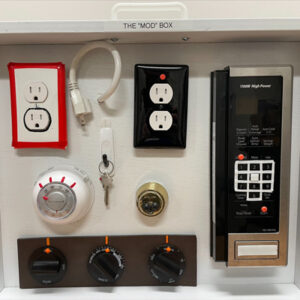Cataract
December 2020
by Liz Hillman
Editorial Co-Director
Patients often seek their ophthalmologist’s expert opinion for the IOL they would recommend if they were in the patient’s situation. As a resident at Northwestern University, Hercules Logothetis, MD, and his mentor Robert Feder, MD, actually asked ophthalmologists about the technology they would choose for themselves.1
“As a resident learning cataract surgery, I became interested in IOL selection and would survey mentors and peers about what they would choose if they were the patient,” Dr. Logothetis said, speaking about what spurred this research. “I thought it was important to know if surgeons were comfortable performing surgical techniques on patients that they may not choose for themselves. That question is complicated. Just because a surgeon prefers one option over another for themselves, it doesn’t mean they don’t support the safety or efficacy of the option they don’t choose.”
“Just because a surgeon prefers one option over another for themselves, it doesn’t mean they don’t support the safety or efficacy of the option they don’t choose.”
—Hercules Logothetis, MD
Dr. Logothetis and his coresearchers used a 29-question survey to ask surgeons about not only IOL choice but also femtosecond laser-assisted cataract surgery (FLACS), their IOL preferences for patients, their personal perspective of risk, and more. The survey garnered 347 responses (328 of which were analyzed) in a 1-month period. The average age of survey respondents was 50.3 (±12.8 years), and most (67%) had been in practice for more than 10 years. More than 60% of respondents were presbyopic. About 85% of respondents performed cataract surgery, and 67.7% used presbyopia-correcting IOLs to some extent.
Ninety-three percent of respondents said quality of vision would be most important in their own cataract surgery, and 43.1% said glasses independence would also be important to them (25.4% said it wouldn’t be important to them). If they had minimal astigmatism, most of the surgeons said they would select a monofocal IOL set for distance (34.5%), followed by 26.8% who would select a monofocal set for monovision, 13.7% a diffractive echelette, 9.5% multifocal, 3.7% accommodative, and 11.9% other. Further, 54.6% of surgeons who had implanted more than 50 multifocal IOLs in their own patient base would select a presbyopia-correcting IOL option for themselves.
“Surgeons who implanted at least 50 multifocal IOL are two times more likely to select a presbyopia-correcting IOL option,” the study authors reported.
If there was more than 1.25 D of astigmatism, 60.3% said they would select a toric monofocal.
As for FLACS, the research showed that 55.4% of those surveyed were not certified to perform FLACS; 19.3% of respondents used femtosecond laser at least once a week. When asked if they would want FLACS for their own surgery, 15.4% of respondents said yes, 31.5% maybe, and 52.9% no. Of those who used the femtosecond laser at least once a week, 55.9% said they would have it for their own surgery.
Dr. Logothetis said he and his coauthors weren’t surprised by the findings.
“The overall lesson was that surgeons based their personal surgical decisions off of familiarity. The more they worked with different technology (femto or multifocal), the more likely they are to use it,” he said.
When asked what IOL he would select, if he currently needed cataract surgery, Dr. Logothetis presented his case: As a 33-year-old post-LASIK patient who worked with the Light Adjustable Lens (LAL, RxSight) during fellowship, Dr. Logothetis said he was pleased, based on that experience, with what it offers post-LASIK patients.
“Today,” he said, “I’d do a LAL for distance, but I don’t really know because I’ve never tried monovision. If PanOptix [Alcon] results with post-LASIK patients are good, I’d strongly consider that.”
ARTICLE SIDEBAR
What would EyeWorld Editorial Board members choose?
Eric Donnenfeld, MD, Chief Medical Editor: I would personally choose a presbyopia-correcting IOL in my non-dominant eye. At present time I would either place a PanOptix or wait for the Symfony Plus. Based on my experience with the non-dominant eye, I would either place the same lens in my dominant eye or I would place a monofocal, aspheric IOL.
Rosa Braga-Mele, MD, Cataract Editor: I had LASIK in both eyes for high myopia 15 years ago. I have slightly regressed in my right eye to –1.25, so I am monovision right now, and it is great. I would have surgery with either an aspheric monofocal IOL with mild monovision, or I would consider the newer EDOF IOL (released from Alcon and one coming from Johnson & Johnson Vision) that are not based on a ring principle and do a bit of mini-monovision with them to extend my depth of focus, but I have to see what the data holds.
Vance Thompson, MD, Refractive Editor: Multifocals for me.
Clara Chan, MD, Cornea Editor: I’m –1.5 D in my left eye and –1+1.00 x 90 in my dominant right eye, so I’d go for femto monofocal –1.5 in my left eye and monofocal, toric target plano in my dominant right for monovision.
Nathan Radcliffe, MD, Glaucoma Editor: I have a family history of glaucoma and did not tolerate even mini-monovision in the past and have undergone surface ablation (PRK), so for my cataract surgery I would focus on maximizing the use of existing technology to hit plano in both eyes, likely with a Light Adjustable Lens.
About the physician
Hercules Logothetis, MD
Eye Physicians of Libertyville
Libertyville, Illinois
Reference
- Logothetis HD, Feder RS. Which intraocular lens would ophthalmologists choose for themselves? Eye. 2019;33:1635–1641.
Relevant disclosures
Logothetis: None



